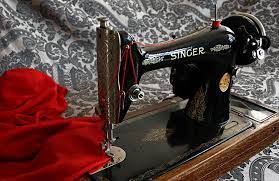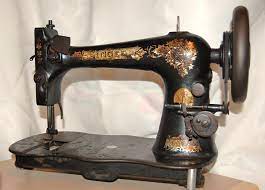The Shrewsbury Historical Society’s display of sewing machines currently on exhibit at the Eastern Branch of the Monmouth County Library, Route 35, Shrewsbury, includes models of Singer Sewing machines in addition to machines from several other companies over the past more than 100 years.
But Singer machines have left an indelible mark on New Jersey, and the story behind this one company alone is enough to generate considerable interest and invitation to the library display which will have an official Grand Opening on April 4 from 5 to 7 pm. A larger exhibition of sewing machines will be in the Historical Society museum on Sycamore Avenue at Four Corners throughout the spring and summer.
The Singer Corporation was first established in New York in 1851, by Isaac M. Singer and Edward C. Clark, a New York attorney. The name was changed to Singer Manufacturing Company 14 years later, and once again to the Singer Company in 1963.
Although currently based in La Vergne, Tennessee, its first largest factory for mass production of sewing machines was built in Elizabeth, New Jersey in 1863. Two years after obtaining its first patent, Singer was the largest manufacturer of sewing machines in the world, creating an average of 13,000 machines a week. The company was also the first to promote payment plans for purchasers and won the blue ribbon at the Paris World’s Fair in 1855.
The company’s original design is recognized as the first practical sewing machine for domestic use, using a need and lock stitch created by Elias Howe. Singer patented Howe’s model, the creator fought and won a patent-infringement suit, and Singer then created an improved model with a circular feed wheel and power from gear wheels to which it secured the patent.
The Singer company played a significant role in World War I, halting sewing machine production to produce millions of artillery shells, fuses, grenades and airplane parts as well as horseshoes. Before the end of the war, approximately 70 percent of the labor force in its factory in Scotland was female.
During World War ii, The Singer company again had government contracts for weapons manufacturing.
The facility in Elizabeth included 48 different buildings covering 113 areas, or 2.6 million square feet. It was a completely integrated and self-sufficient plant, building all the parts and machinery it needed for their own sewing machine manufacture.
It played a crucial role during both wars, producing cannons and .45 automatic pistols during the first World War, in addition to other munitions, and numerous armaments and spare parts during the second World War.
Post war, it produced more than 20,000 machines of two different models between the end of the war and the late 1970s when the company switched its focus to industrial sewing machines.
Today the Singer plant in Elizabeth is no longer functional, but it remains a vital part of the history of the city and Union County.

